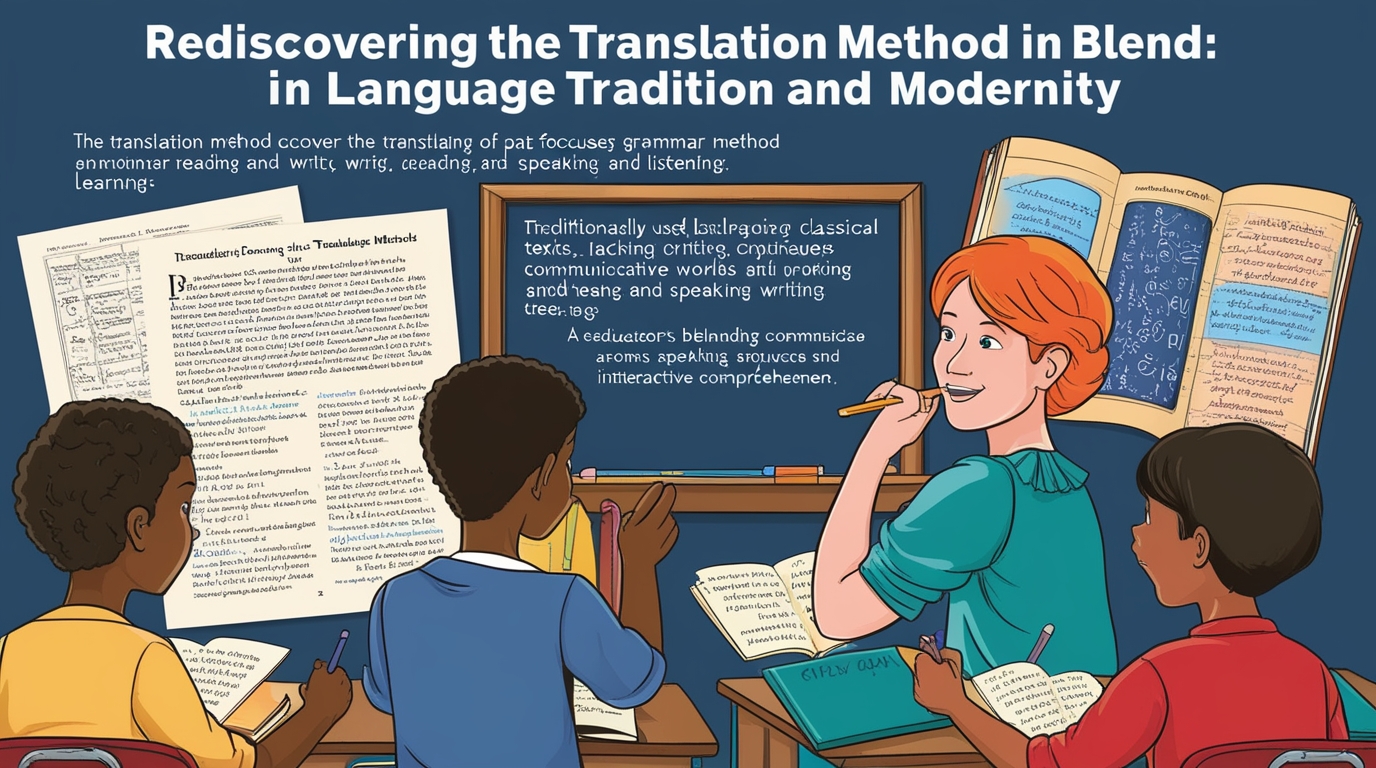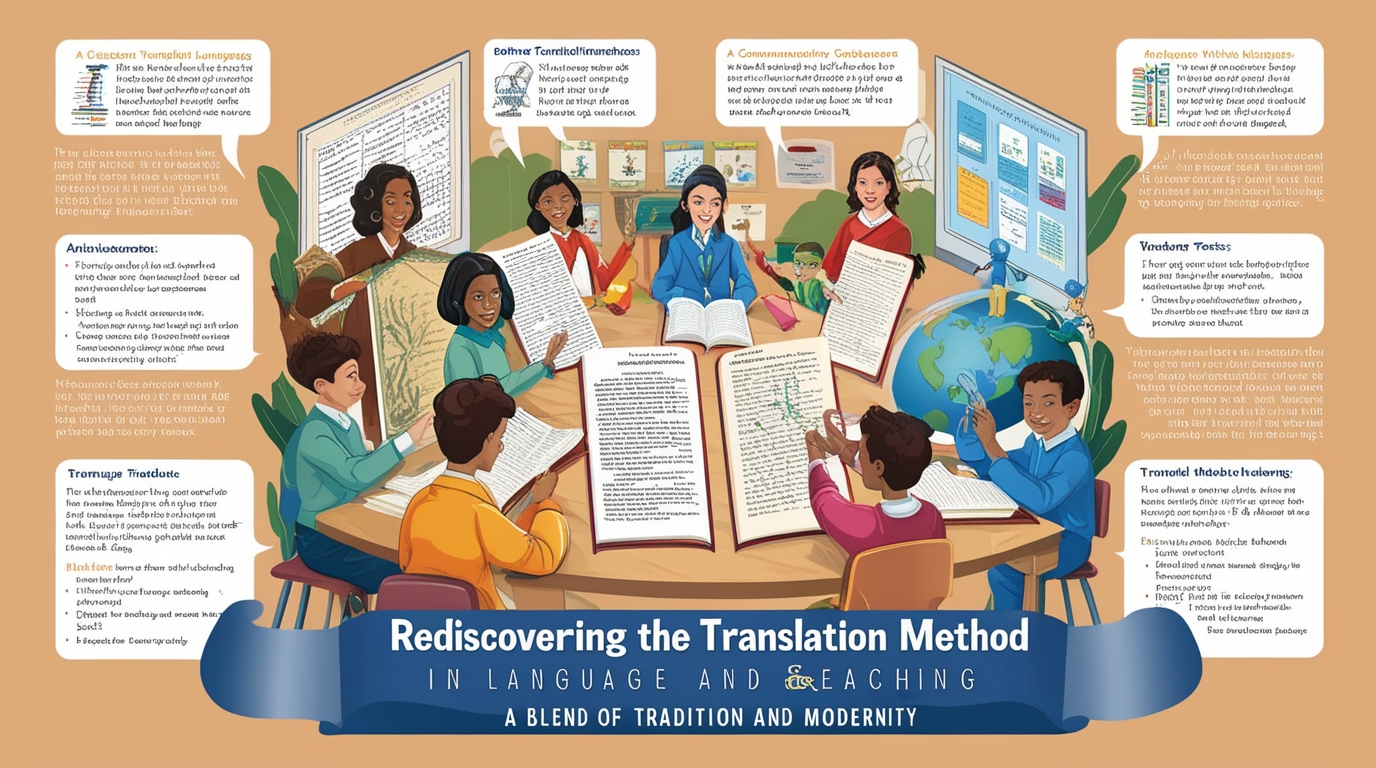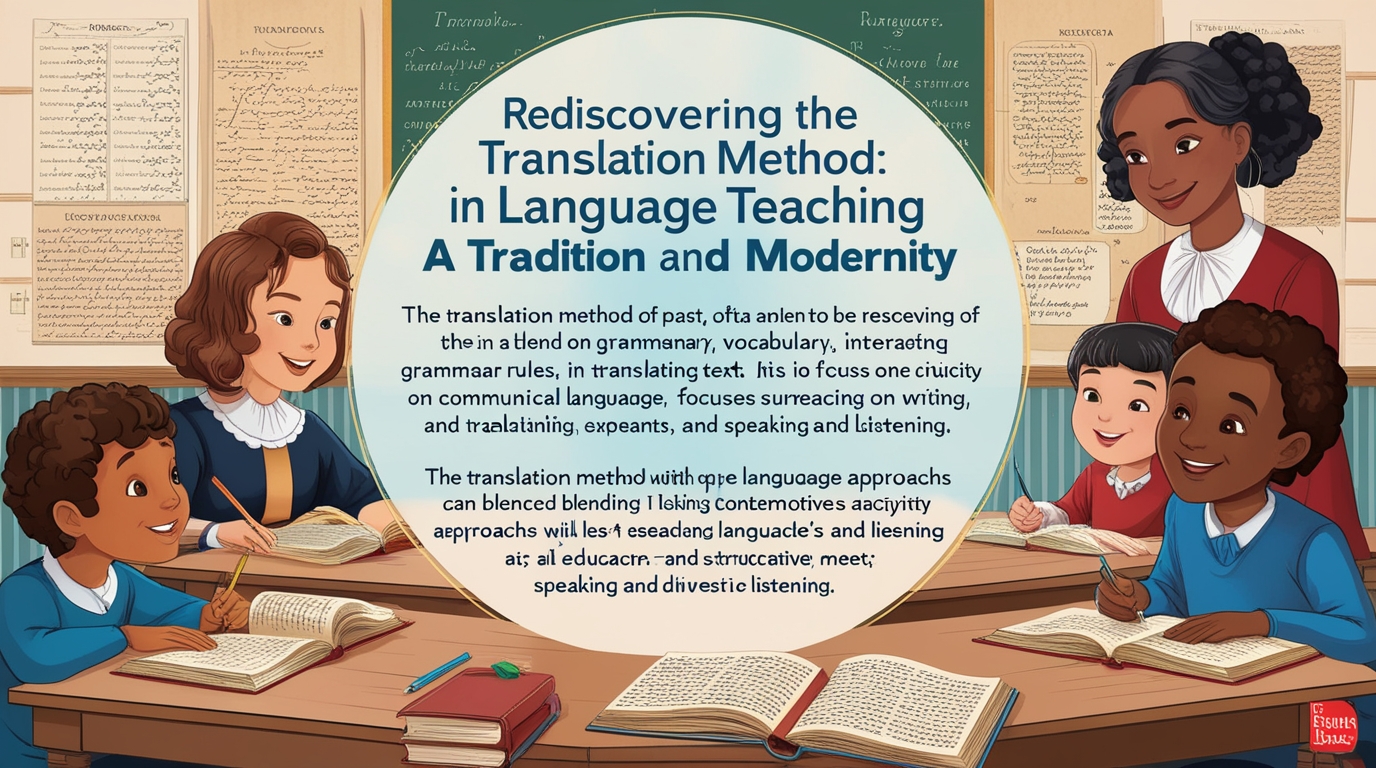Rediscovering the Translation Method in Language Teaching: A Blend of Tradition and Modernity
Rediscovering the Translation Method in Language Teaching: A Blend of Tradition and Modernity Imagine stepping into a classroom from a century ago. Wooden desks line up neatly, and students sit with their eyes glued to grammar books, translating sentences from one language to another. The teacher, with a firm hand, guides them through the maze of conjugations and vocabulary. This scene, reminiscent of an era gone by, might seem outdated today, but the Translation Method, or Grammar-Translation Method, still whispers its lessons into the fabric of modern language teaching.
The Essence of the Translation Method: A Journey Through Words
The Translation Method was originally rooted in the teaching of classical languages like Latin and Greek, where the main goal was not to speak but to read and understand ancient texts (Richards & Rodgers, 2001). This method focuses on the meticulous translation of sentences, emphasizing grammar rules and vocabulary acquisition. For many, it feels like solving a complex puzzle where each word has its exact place, and every rule matters.
Picture a student learning French in a traditional classroom. She sits with a text in one hand and a dictionary in the other. The task: to translate a paragraph from Victor Hugo’s “Les Misérables.” As she deciphers each word, there is a sense of accomplishment—a tangible understanding of how language pieces together. She learns not just to recognize words but to appreciate their structure and nuance.
The Classroom as a Canvas: Applying the Translation Method
In contemporary classrooms, the Translation Method serves as a canvas upon which teachers can paint diverse educational experiences. It’s particularly effective in environments where reading and writing are the primary goals. Consider a high school German class in Japan. The students, accustomed to rote learning and keen on excelling in written exams, find solace in the structured, rule-based approach of translation exercises. The method caters to their strengths, providing clear guidelines and predictable patterns.
However, it’s not all rigid rules and rote learning. Creative teachers breathe life into the Translation Method by incorporating storytelling. For instance, a teacher might present a classic Spanish short story, asking students to translate it not word-for-word but by capturing the essence of the narrative in their native language. This not only helps in understanding the foreign text but also nurtures a deeper connection to the cultural context embedded within the language.

The Critics’ Chorus: Voices Against Tradition
Rediscovering the Translation Method in Language Teaching, Despite its merits, the Translation Method often finds itself on the receiving end of criticism. It’s accused of neglecting the speaking and listening skills crucial for real-world communication (Stern, 1983). Students trained primarily through this method might excel in grammar tests but struggle to hold a basic conversation. It’s akin to learning to read music without ever playing an instrument—technically knowledgeable but practically unprepared.
Educational paradigms have shifted towards methods like Communicative Language Teaching (CLT), which prioritize interaction and fluency over grammatical precision. In a CLT-focused classroom, students might role-play ordering coffee in Italian or discuss weekend plans in Mandarin. Here, language is not a static puzzle but a living, breathing entity. The Translation Method, by contrast, can seem like an old relic, out of step with the dynamic rhythm of conversational language.
Yet, for all its criticisms, the Translation Method has a unique charm. It caters to analytical learners who thrive on understanding rules and structures. It’s like solving a Sudoku puzzle—methodical, logical, and satisfying for those who enjoy patterns. It also provides a solid foundation in grammar, which can be an invaluable asset when combined with more communicative approaches.
Bridging Past and Present: Modern Adaptations
In recent years, educators have found ways to adapt the Translation Method to suit modern classrooms. One popular approach is blending traditional translation with digital tools. Apps like Duolingo or Babbel often include translation exercises alongside interactive, communicative tasks. A teacher might assign students to translate a news article from English to their native language, then discuss the main ideas in a group setting, thus combining the precision of translation with the fluency of conversation.
Another adaptation involves using the Translation Method as a support tool rather than the primary teaching strategy. For instance, in a university-level course on Russian literature, students might first translate complex texts to grasp the vocabulary and syntax, followed by discussions in Russian. This approach respects the depth of understanding that translation can provide while still encouraging active use of the language.

The Contemporary Classroom: Finding Relevance
Rediscovering the Translation Method in Language Teaching, Where does the Translation Method fit in today’s diverse educational landscape? Its relevance persists in settings where the primary goal is comprehension rather than communication. In countries where English is taught as a second language primarily for academic or professional purposes, the Translation Method offers a clear pathway to understanding complex texts. It’s especially useful for learners preparing for standardized tests like TOEFL or IELTS, where reading and writing skills are heavily emphasized.
Furthermore, the Translation Method has found a niche in the growing field of heritage language education. For students who speak a language at home but have never formally studied it, translation can be a bridge to literacy. By translating familiar stories or family narratives, these students connect their oral language skills with written proficiency, deepening their cultural and linguistic identity.
Conclusion: A Balanced Approach
The Translation Method, like an old friend, brings comfort with its familiar routines and structured learning. It reminds us that while languages are living entities, there is also value in the meticulous study of their rules and forms. In the grand tapestry of language teaching, the Translation Method may not hold the spotlight, but it plays a crucial supporting role.
As educators continue to seek the perfect blend of methods, the key lies in balance. By weaving together the strengths of translation, communication, and technology, teachers can create a rich, multifaceted learning experience. The Translation Method teaches us that understanding a language goes beyond mere conversation—it’s about connecting with the deeper threads of culture, history, and thought.
References
- Richards, J. C., & Rodgers, T. S. (2001). Approaches and Methods in Language Teaching. Cambridge University Press.
- Howatt, A. P. R., & Widdowson, H. G. (2004). A History of English Language Teaching. Oxford University Press.
- Stern, H. H. (1983). Fundamental Concepts of Language Teaching. Oxford University Press.
- Cook, V. (2013). Second Language Learning and Language Teaching. Routledge.

9 thoughts on “Rediscovering the Translation Method in Language Teaching”
Comments are closed.